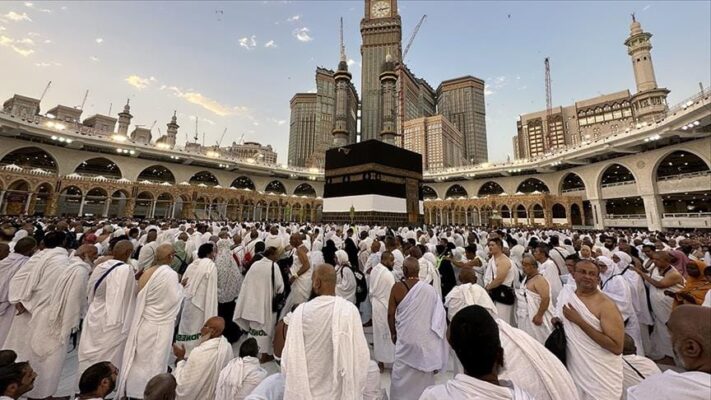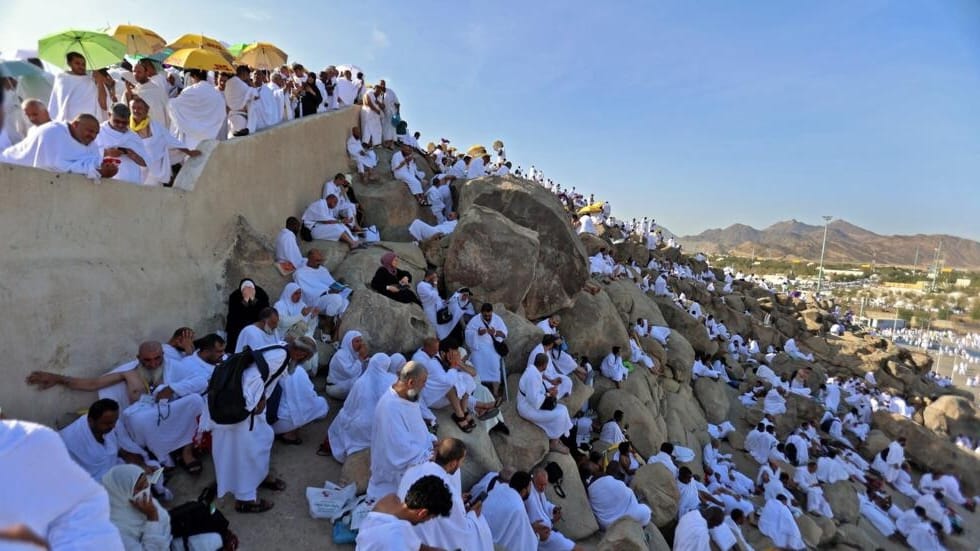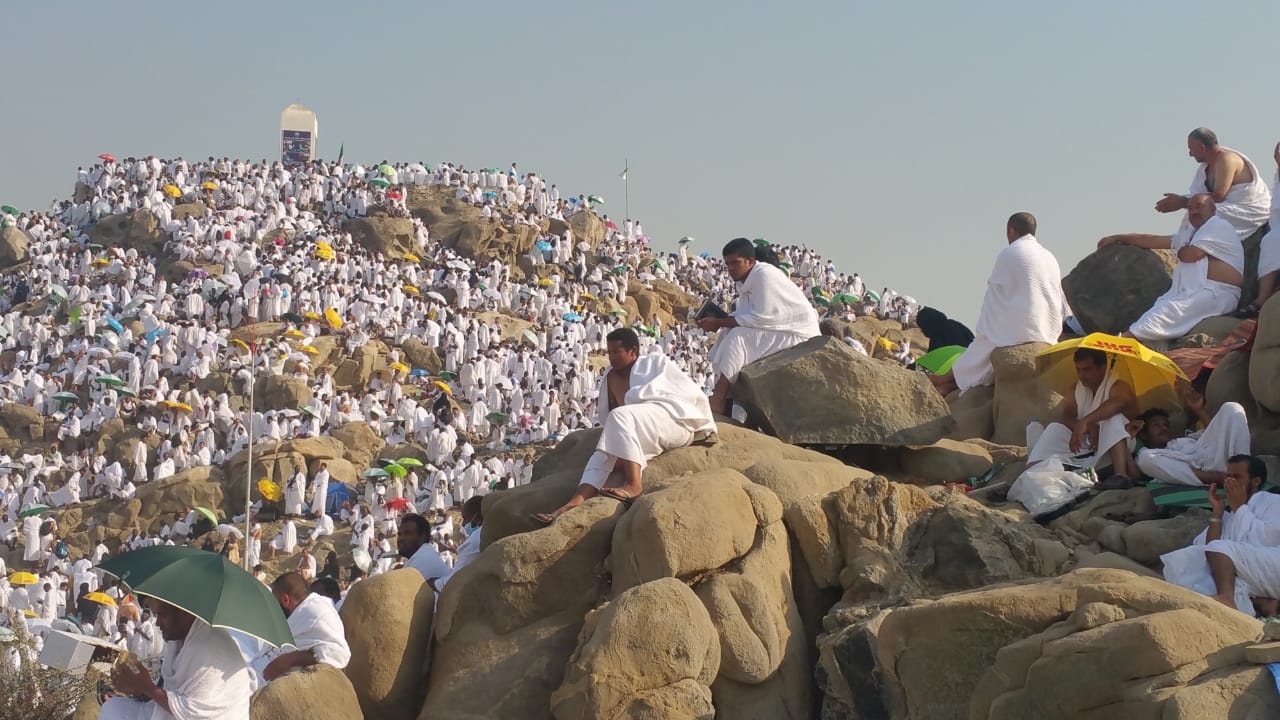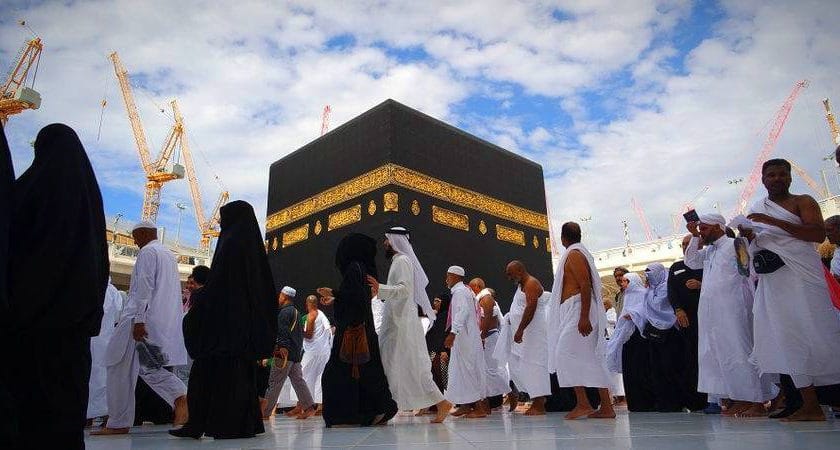
Introduction:
Hajj, the fifth pillar of Islam, stands as one of the most profound expressions of faith and devotion in the Islamic tradition. This annual pilgrimage to the holy city of Mecca is a mandatory religious duty for Muslims who are physically and financially able to undertake the journey. Hajj is much more than a ritualistic journey; it is a deep, spiritual experience that aims to purify the soul, absolve sins, and foster a closer relationship with Allah. In this comprehensive blog, we will explore the rich significance of Hajj, delving into its historical roots, the detailed rites, and its profound spiritual, social, and moral dimensions.
The Historical and Religious Foundations of Hajj:
Historical Background of Hajj:
The origins of Hajj are deeply rooted in Islamic tradition, tracing back to the Prophet Ibrahim (Abraham) and his family. According to Islamic teachings, Allah commanded Ibrahim to take his wife Hagar and their son Ismail to the barren valley of Mecca. There, Ibrahim left them with some provisions and prayed for their safety. When their water supply ran out, Hagar ran between the hills of Safa and Marwah in search of water. Her desperate search ended when Allah miraculously provided the well of Zam zam.
Years later, Allah instructed Ibrahim and Ismail to build the Kaaba, a simple, cuboid structure that would serve as a focal point for worship. The Kaaba became the most sacred site in Islam, and its construction marked the beginning of the Hajj rituals. The annual pilgrimage commemorates the acts of Ibrahim, Hagar, and Ismail, and their unwavering faith and obedience to Allah.
Quranic and Prophetic Teachings:
The obligation of Hajj is explicitly mentioned in the Quran: “And proclaim to the people the Hajj; they will come to you on foot and on every lean camel; they will come from every distant pass” (Quran 22:27). Additionally, the Prophet Muhammad’s (PBUH) own Hajj, known as the Farewell Pilgrimage, set a clear example for the Muslim community, providing detailed instructions and demonstrating the rites of Hajj.
The Rites of Hajj: A Step-by-Step Journey:
Hajj is a deeply symbolic journey comprising several rituals that are performed over five to six days during the Islamic month of Dhu al-Hijjah. Each ritual holds profound spiritual significance, reminding pilgrims of the historical and spiritual heritage of Islam.
- Ihram:
Before entering the holy city of Mecca, pilgrims enter a state of ritual purity known as Ihram. Men wear two white, seamless garments, while women wear simple, modest clothing. The garments symbolize purity, equality, and unity, as all pilgrims appear the same regardless of their social or economic status. In this state, pilgrims must refrain from certain activities, such as cutting their hair, wearing perfume, or engaging in marital relations. - Tawaf:
Upon reaching Mecca, pilgrims perform Tawaf, which involves circumambulating the Kaaba seven times in a counterclockwise direction. This act symbolizes the unity of believers in the worship of the One God, with the Kaaba at the center of their faith. Pilgrims recite prayers and supplications, seeking Allah’s blessings and mercy. - Sa’i:
After Tawaf, pilgrims perform Sa’i, which involves walking seven times between the hills of Safa and Marwah. This ritual commemorates Hagar’s frantic search for water for her son Ismail. It symbolizes the struggle and perseverance required in the face of adversity and the ultimate reliance on Allah. - Standing at Arafat:
The climax of Hajj is the Day of Arafat, where pilgrims gather on the plain of Arafat to pray, repent, and seek forgiveness. This day is considered the most important day of Hajj, as it is believed that Allah’s mercy and forgiveness are abundant. Pilgrims spend the day in intense prayer and reflection, asking for forgiveness for their sins and seeking spiritual renewal. - Muzdalifah:
After sunset on the Day of Arafat, pilgrims travel to Muzdalifah, where they spend the night under the open sky. Here, they collect pebbles that will be used in the next ritual. This night is a time of rest and contemplation, as pilgrims prepare for the symbolic stoning of the devil. - Ramy al-Jamarat:
In Mina, pilgrims perform the ritual of Ramy al-Jamarat, which involves throwing pebbles at three pillars. These pillars represent the devil and the act commemorates Ibrahim’s rejection of Satan’s temptation to disobey Allah. This ritual symbolizes the rejection of evil and the casting away of sin. - Sacrifice:
After the stoning, pilgrims perform the sacrifice of an animal, usually a sheep, goat, cow, or camel. This act commemorates Ibrahim’s willingness to sacrifice his son Ismail in obedience to Allah. The meat from the sacrifice is distributed to the needy, emphasizing the importance of charity and sharing. - Tawaf al-Ifadah:
Following the sacrifice, pilgrims return to the Kaaba for another circumambulation known as Tawaf al Ifadah. This ritual signifies the pilgrim’s renewed state of purity and devotion. - Halq or Taqsir:
Male pilgrims shave their heads (Halq) or cut a portion of their hair (Taqsir), while female pilgrims cut a small portion of their hair. This act symbolizes purification and the shedding of past sins. - Tawaf al-Wada:
Before leaving Mecca, pilgrims perform the farewell circumambulation, known as Tawaf al-Wada. This final act signifies the pilgrim’s farewell to the holy city and their readiness to return to their daily lives with a renewed sense of spiritual purpose.

The Spiritual Significance of Hajj:
Hajj is much more than a series of physical rituals; it is a profound spiritual journey that transforms the heart and soul of a believer.
Submission to Allah:
Hajj is a manifestation of a Muslim’s submission to the will of Allah. The journey requires immense physical and spiritual endurance, symbolizing the pilgrim’s devotion and obedience to God. Each ritual reinforces the concept of surrendering to Allah’s will and acknowledging His supreme power.
Repentance and Forgiveness:
The standing at Arafat is a day of deep repentance and seeking forgiveness. It is believed that on this day, Allah’s mercy and forgiveness are abundant, and sins are wiped away. Pilgrims engage in intense prayer and self reflection, seeking to cleanse their hearts and souls of past wrongdoings.
Equality and Unity:
The simple white garments of Ihram symbolize the equality and unity of all Muslims. Regardless of race, nationality, or social status, all pilgrims stand equal before Allah. This sense of equality fosters a feeling of brotherhood and sisterhood among the pilgrims, reinforcing the notion of the global Muslim community (Ummah).
Reflection and Self-Improvement:
The various rituals provide opportunities for self-reflection and spiritual growth. Pilgrims are encouraged to contemplate their lives, seek forgiveness for their sins, and make a renewed commitment to living according to Islamic principles. The journey serves as a catalyst for personal transformation and self-improvement.
Commemoration of Prophetic Traditions:
Each ritual performed during Hajj commemorates the actions and faith of the Prophets Ibrahim and Muhammad. By re-enacting these historical events, pilgrims connect with their religious heritage and strengthen their faith. The rituals serve as a reminder of the importance of faith, obedience, and sacrifice in the path to spiritual fulfillment.
The Social and Communal Impact of Hajj:
Hajj and Community:
Hajj also plays a vital role in fostering a sense of global Muslim community (Ummah).
- Brotherhood and Sisterhood:
Pilgrims from diverse backgrounds come together, fostering a sense of brotherhood and sisterhood that transcends national and cultural boundaries. The shared experience of Hajj creates a bond among pilgrims, as they support and encourage one another throughout the journey. - Shared Experiences:
The collective experience of Hajj creates bonds among pilgrims, as they share in the challenges and spiritual highs of the journey. The sense of camaraderie and mutual support enhances the overall experience, creating lasting memories and friendships. - Global Representation:
Muslims from every corner of the globe participate in Hajj, representing the diversity and unity of the Islamic faith. The gathering of millions of Muslims in one place highlights the universal nature of Islam and its ability to bring people together in worship and devotion. - Strengthening of Faith Communities:
The experience of Hajj often inspires pilgrims to become more active and engaged in their local faith communities. Upon returning home, many pilgrims share their experiences and insights, encouraging others to undertake the pilgrimage and fostering a sense of collective spiritual growth.

Challenges and Rewards of Hajj:
The journey of Hajj is not without its challenges, but the spiritual rewards far outweigh the difficulties.
Physical and Mental Endurance:
The rigorous nature of the rituals requires physical stamina and mental resilience. Pilgrims must be prepared for long periods of walking, standing, and often harsh weather conditions. The journey tests their endurance and patience, reinforcing the importance of perseverance in the pursuit of spiritual goals.
Financial Sacrifice:
Undertaking Hajj can be financially demanding, as pilgrims must cover the costs of travel, accommodation, and other expenses. Many Muslims save for years to fulfill this religious obligation, demonstrating their commitment and devotion to Allah.
Spiritual Fulfillment:
Despite the challenges, the spiritual fulfillment of completing Hajj is immense. Pilgrims often describe a profound sense of peace, joy, and closeness to Allah upon completing their pilgrimage. The journey provides a unique opportunity for spiritual renewal and growth, leaving a lasting impact on the pilgrim’s life.
Transformation and Renewal:
The experience of Hajj often leads to a transformation in the pilgrim’s life, with a renewed commitment to living a life of righteousness and devotion to Allah. Pilgrims return with a heightened sense of spiritual awareness and a desire to uphold Islamic values in their daily lives.
The Impact of Hajj on a Muslim’s Life:
The impact of Hajj extends far beyond the days spent in Mecca.
Enhanced Spiritual Awareness:
The intense spiritual experiences during Hajj deepen a Muslim’s awareness and connection to Allah. Pilgrims often return with a heightened sense of spirituality and a stronger commitment to their faith.
Strengthened Faith:
The trials and triumphs of Hajj strengthen a Muslim’s faith, instilling a greater sense of trust and reliance on Allah. The journey reinforces the importance of patience, perseverance, and faith in the face of challenges.
Continued Reflection:
The lessons learned during Hajj continue to resonate in a pilgrim’s life, encouraging ongoing reflection and self improvement. Pilgrims often engage in regular acts of worship and devotion, seeking to maintain the spiritual momentum gained during the pilgrimage.
Community Engagement:
Many pilgrims return with a desire to contribute more actively to their local and global Muslim communities, inspired by the unity and brotherhood experienced during Hajj. They often become involved in charitable activities, community service, and efforts to promote Islamic values and teachings.
Personal Growth:
The transformative experience of Hajj often leads to personal growth and development. Pilgrims return with a renewed sense of purpose and a commitment to living a life that reflects the principles of Islam. This personal growth extends to various aspects of their lives, including relationships, work, and community involvement.

Modern Challenges and Innovations in Hajj:
As the number of Muslims worldwide continues to grow, the logistical challenges of organizing Hajj have also increased. Modern innovations and measures have been implemented to ensure the safety and well-being of pilgrims.
Infrastructure and Facilities:
The Saudi Arabian government has invested significantly in infrastructure and facilities to accommodate the millions of pilgrims who perform Hajj each year. This includes the expansion of the Grand Mosque in Mecca, the construction of new roads and transportation systems, and the development of housing and medical facilities.
Technology and Communication:
Modern technology has played a crucial role in improving the Hajj experience. Mobile apps, online portals, and social media platforms provide pilgrims with essential information, guidance, and support. These tools help pilgrims navigate the rituals, stay informed about important updates, and connect with their fellow pilgrims.
Health and Safety:
Ensuring the health and safety of pilgrims is a top priority. Measures such as vaccination requirements, health screenings, and emergency medical services are in place to protect pilgrims from illness and injury. The Saudi government also implements crowd control measures to prevent accidents and ensure the smooth flow of pilgrims during the rituals.
Environmental Considerations:
As the number of pilgrims increases, so does the environmental impact of Hajj. Efforts are being made to promote sustainable practices, such as reducing waste, conserving water, and minimizing the carbon footprint of the pilgrimage. These initiatives aim to protect the environment and preserve the sanctity of the holy sites.

Personal Stories of Transformation:
Testimonies of Pilgrims:
The impact of Hajj on individual lives is profound and varied. Many pilgrims recount their experiences of spiritual awakening, personal transformation, and deepened faith. These testimonies highlight the ways in which Hajj serves as a catalyst for positive change, inspiring believers to live more devout and purposeful lives.
Overcoming Challenges:
The journey of Hajj is not without its challenges. Pilgrims often face physical exhaustion, logistical difficulties, and emotional trials. However, these challenges are seen as part of the purification process, strengthening the pilgrim’s resolve and faith. Stories of overcoming adversity during Hajj are a testament to the transformative power of this sacred journey.
Pilgrims may encounter obstacles such as long queues, crowded accommodations, and extreme weather conditions. Successfully navigating these challenges requires patience, resilience, and a focus on the spiritual goals of Hajj. The experience of overcoming these difficulties can deepen the pilgrim’s faith and enhance their
sense of accomplishment and spiritual fulfillment.
Conclusion:
Hajj is a journey of immense spiritual significance, offering Muslims a unique opportunity to deepen their faith, seek forgiveness, and reaffirm their commitment to Allah. Through the rites of Hajj, pilgrims experience a profound sense of purification, unity, and equality, embodying the core principles of Islam. Beyond its spiritual impact, Hajj also strengthens the global Muslim community, promoting social justice, charity, and mutual understanding. As a pillar of Islam, Hajj continues to inspire and transform the lives of millions, guiding them on a path of spiritual growth and devotion.
By understanding and appreciating the multifaceted significance of Hajj, Muslims and non-Muslims alike can gain a deeper insight into the rich spiritual and cultural heritage of Islam. This journey of a lifetime not only shapes the individual pilgrim but also reinforces the collective strength and unity of the Muslim Ummah, contributing to a more compassionate and just world.


Alizay Ali is a skilled HR manager with two years of experience at AppVerse Technologies. With her strong interpersonal skills and expertise in talent acquisition, employee engagement, and HR operations, she plays a pivotal role in fostering a positive and productive work environment. She with a passion for learning and a drive to succeed, she eagerly embraces new challenges and is poised to make her mark in the ever-evolving world of technology
